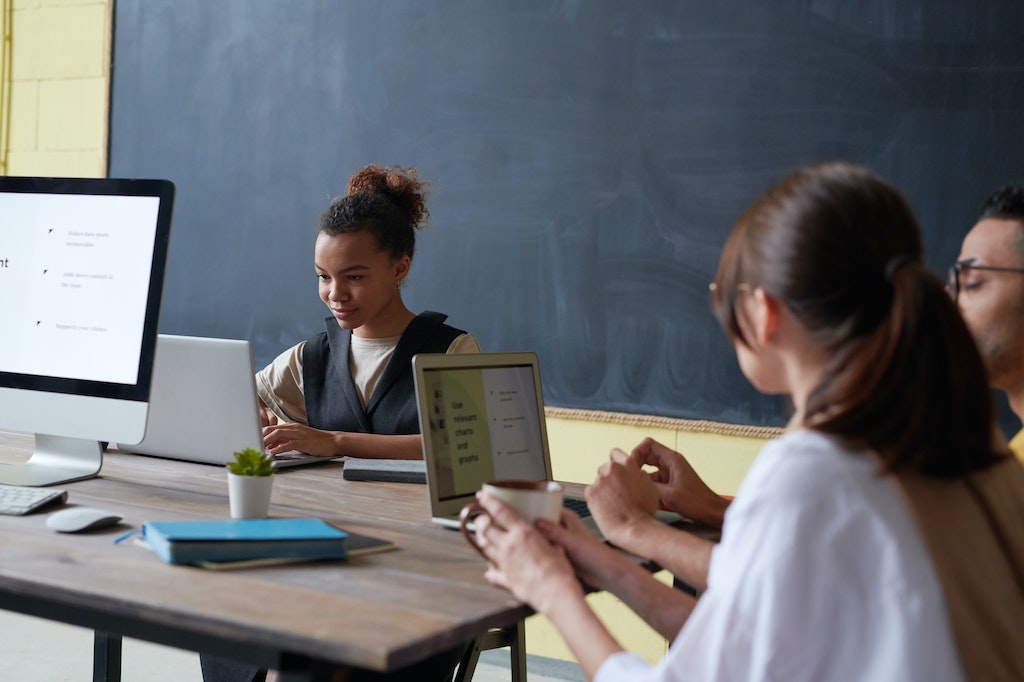With the rise of technology, the way we learn has transformed dramatically. From the use of interactive whiteboards and online learning platforms to virtual reality simulations and artificial intelligence, technology has made learning more engaging, personalized, and accessible. Today, it is nearly impossible to imagine learning without the latest technologies. This article will shed light on the ways in which technology has revolutionized the education sector and examine the benefits it has to offer for both students and educators. From improving academic performance to increasing access to education, we will discuss how technology has transformed how we learn and why it is crucial for the future of education.

1. Improved Academic Performance
Technology has transformed how students learn and engage with educational material, improving academic performance. Online platforms, such as youracademicwriter.net, have made it easy for students to access academic writing help to improve their grades.
With these platforms, students can get professional research paper writing services and other forms of academic support from qualified experts in their respective fields. This ensures that students receive high-quality work that meets educational standards, which can ultimately lead to better grades and academic success.
Moreover, technology has enabled personalized learning, where students can access resources tailored to their learning styles and abilities. Online platforms offer interactive learning tools, such as videos, simulations, and games, that make learning fun and engaging.
Additionally, digital resources allow for easy access to academic material, making it easier for students to review concepts and study at their own pace. This personalized approach to learning can improve academic performance by helping students to understand better and retain information, leading to better test scores and overall success in school.
2. Improved Collaboration and Communication
Technology has also transformed how students and educators collaborate and communicate with one another. Students and educators can easily connect and communicate through online discussion forums, collaborative writing tools, and video conferencing platforms without minding their physical location. This can facilitate more effective collaboration and teamwork and allow for greater participation from students needing more time to speak up in a traditional classroom setting.
Additionally, technology has enabled educators to provide more timely and personalized feedback to students, which can help students identify areas for improvement and make progress more quickly. This feedback can also be more easily shared and disseminated to other students, allowing for more effective peer learning and knowledge-sharing.
3. Personalization and Adaptability
One of the advantages of technology in education is the ability to personalize and adapt the learning experience to individual students. Using learning management systems, data analytics, and machine learning algorithms, educators can gather and analyze data on student performance to identify strengths and weaknesses and tailor instruction accordingly. This allows students to receive personalized learning experiences better suited to their needs and preferences.
Furthermore, adaptive learning technologies can dynamically adjust educational materials’ difficulty levels and content in response to student performance, ensuring that each student is appropriately challenged and engaged. This can lead to improved academic outcomes and greater student satisfaction, as students can progress at their own pace and feel more invested in their learning journey.
4. Enhanced Access to Education
Another significant benefit of technology in education is the ability to increase access to education for students who may have otherwise been unable to attend traditional institutions. Online learning platforms, massive open online courses, and virtual classrooms have opened up new opportunities for students in remote or undeserved areas, allowing them to access high-quality education without needing physical proximity to traditional institutions.
Furthermore, technology has also made education more accessible for students with disabilities, as assistive technologies such as screen readers and speech recognition software can help facilitate learning for students with visual, auditory, or physical impairments. This increased accessibility can lead to greater diversity in the student body and a more inclusive learning environment.
5. Engaging and Interactive Learning
Finally, technology has made learning more engaging and interactive by incorporating multimedia elements such as videos, animations, and simulations into educational materials. These interactive elements help students better understand complex concepts, engage with the material more hands-only, and retain information more effectively.
Furthermore, gamification techniques, such as the use of game-like features and rewards, can help increase student motivation and engagement with the learning material. This can lead to greater satisfaction and enjoyment of the learning process and improved academic outcomes.
6. Help for Students with Disabilities
Technology has made education more accessible to students with disabilities. With assistive technologies, students who would have previously struggled to access educational materials can now easily pursue their education. For example, screen readers, text-to-speech software, and magnification software are some assistive technologies that enable students with visual impairments to access educational material.
Additionally, speech recognition software and alternative input devices, such as touchscreens and specialized keyboards, make it easier for students with physical disabilities to navigate their devices and complete assignments.
Online learning platforms have also made education more accessible to students with disabilities. With virtual classrooms and online learning resources, students can participate in classes from their homes, eliminating the need for physical access to classrooms and campuses. Online platforms also offer flexibility in terms of pace, allowing students to learn at their speed.
This flexibility is beneficial for students with disabilities who may require additional time to complete assignments or take breaks during the day. With technology, students with disabilities can overcome the challenges that previously limited their access to education, enabling them to pursue their academic goals and succeed.
Conclusion
Technology has adjusted the way we learn in numerous ways. From personalized learning experiences to improved access to education, engaging and interactive learning, increased collaboration and communication, and improved academic performance, technology has had a significant impact on the education sector. As we move forward, educators must continue to explore and embrace new technologies to enhance the learning experience for students and prepare them for the future.
Interesting insights on technology! True, educators must be informed with the latest tech to keep up with the times.